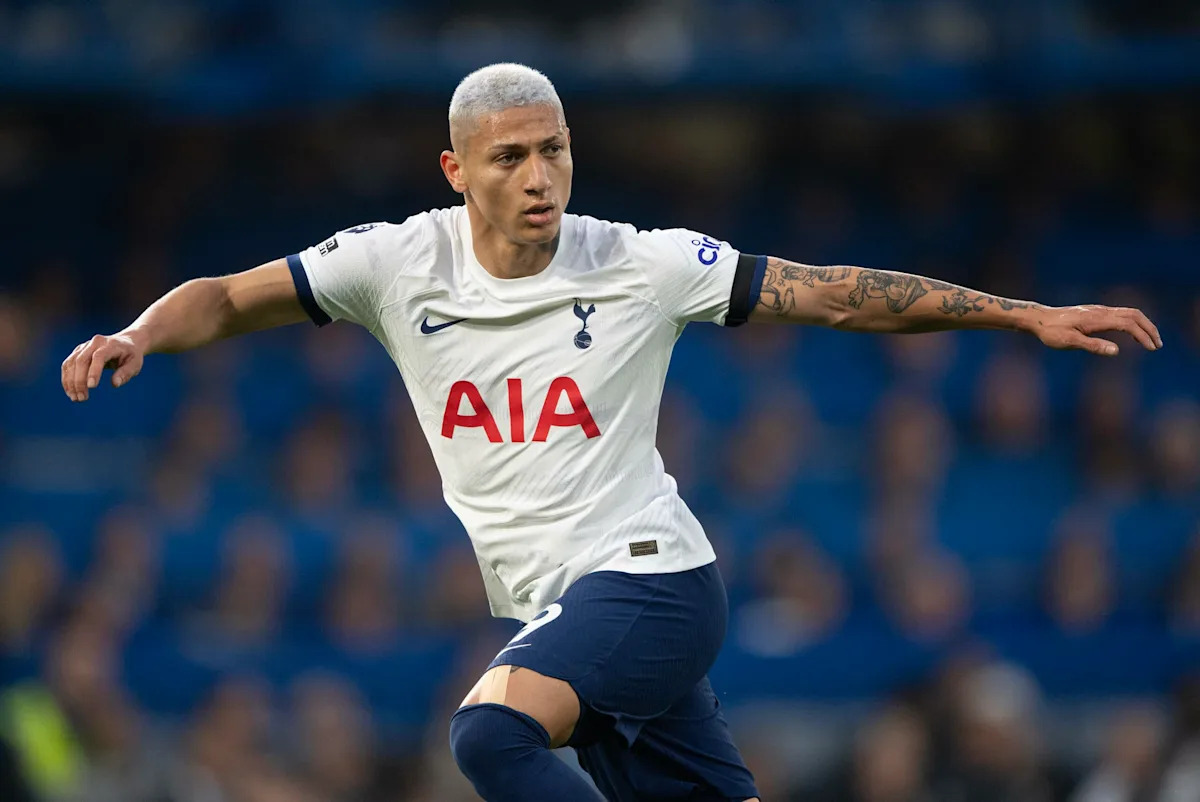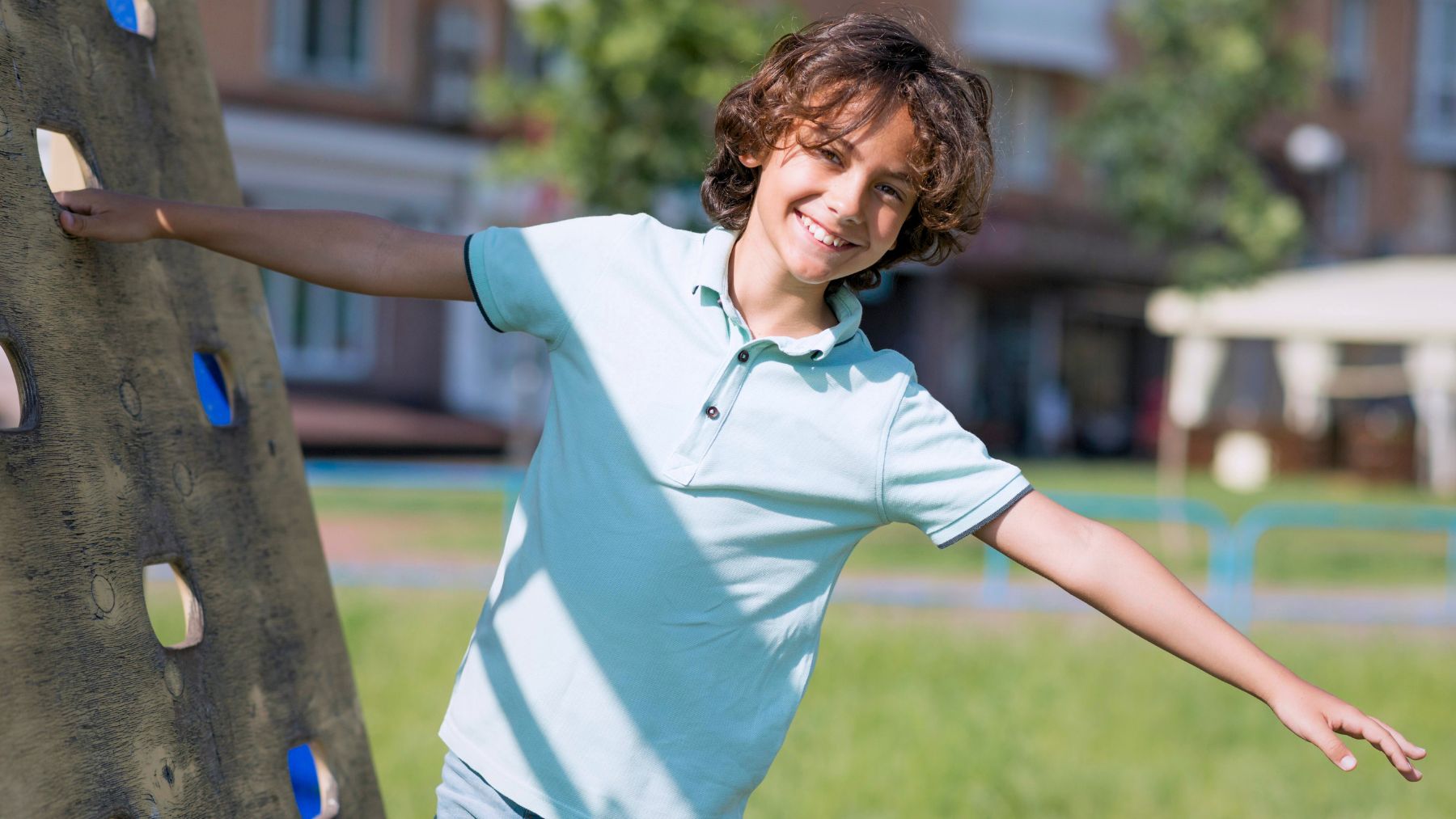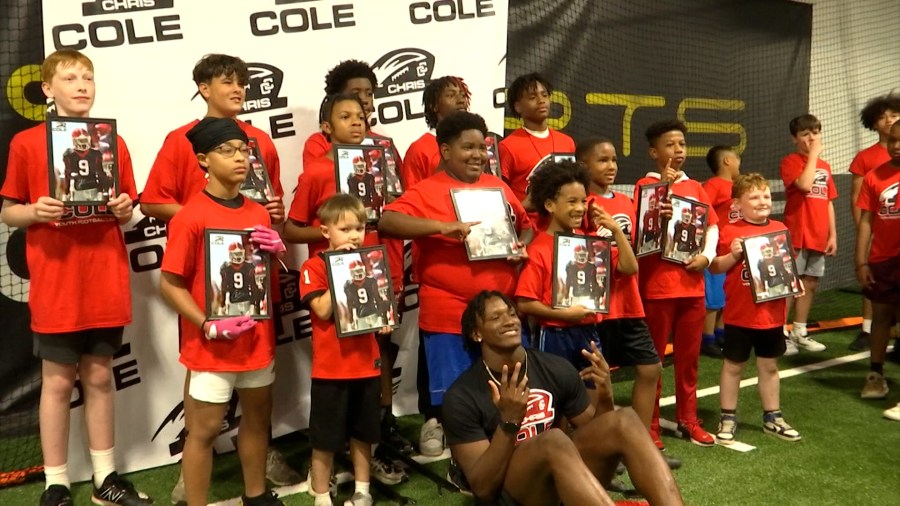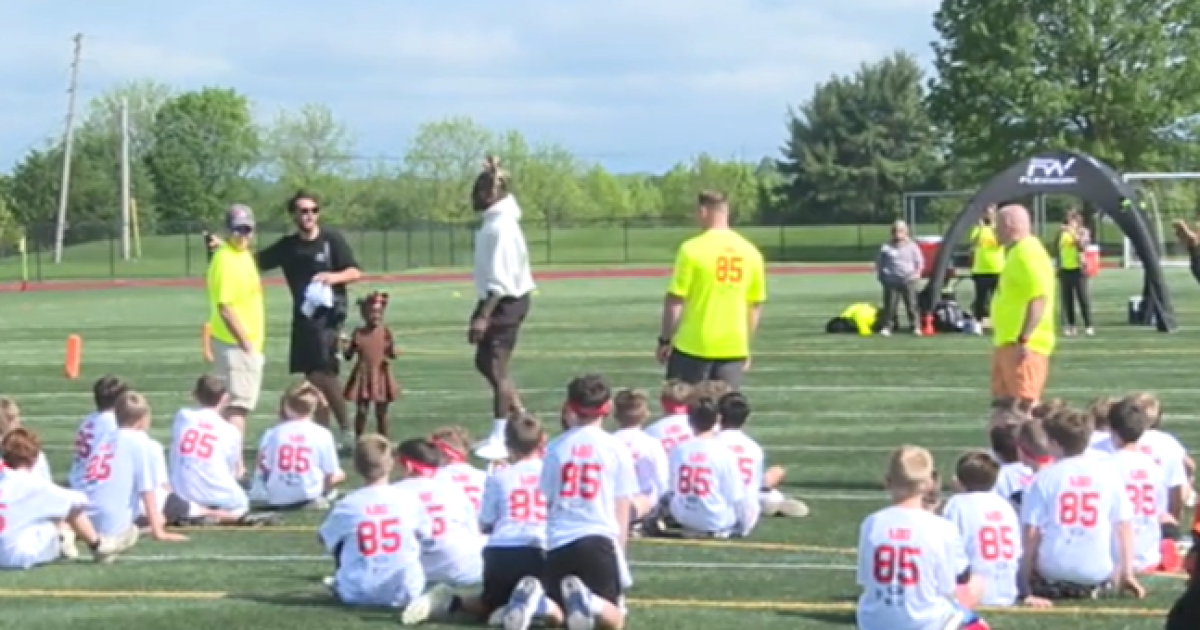Rec Sports
Richarlison Return and Youth Targets Shape Everton’s Transfer Plans
Moyes’ New Era Gains Traction With Bramley-Moore Dock nearing completion and Premier League status tentatively secured, Everton head into the summer with cautious optimism. David Moyes’ second coming hasn’t been about romance—it’s been about restoring identity. He’s made the Toffees harder to beat and now turns his gaze toward a recruitment drive crucial to bridging […]

Moyes’ New Era Gains Traction
With Bramley-Moore Dock nearing completion and Premier League status tentatively secured, Everton head into the summer with cautious optimism. David Moyes’ second coming hasn’t been about romance—it’s been about restoring identity. He’s made the Toffees harder to beat and now turns his gaze toward a recruitment drive crucial to bridging ambition with reality.
Advertisement
As GiveMeSport reports, Moyes has “a promising start to his second spell in charge,” and the Friedkin Group’s financial muscle, combined with Nick Hammond’s input, gives the blue half of Merseyside rare structural clarity heading into the transfer window. It’s a moment to shape not just a team, but an entire club future.
Forward Line Faces Overhaul
The future of Dominic Calvert-Lewin hangs in the balance, triggering a striker hunt that spans continents. Names such as Mika Biereth, Evan Ferguson, and Albert Gudmundsson are being monitored, but it’s the whisper of a Richarlison return that truly stirs emotion.

Photo: IMAGO
“The dream return would be Richarlison,” notes GiveMeSport. At under £40 million, that deal feels loaded with sentiment, but also strategy—his tenacity and link-up play embody exactly what Moyes seeks.
Defensive Diligence Underway
With Jarrad Branthwaite expected to stay—despite admiration from England’s elite—attention turns to bolstering depth. David Hancko may be unattainable, but Burnley’s Maxime Estève and Leicester’s Victor Kristiansen offer Premier League readiness without eye-watering price tags. Quiet moves, maybe, but in keeping with Everton’s pragmatic tone.

Photo IMAGO
Midfield Mix of Experience and Potential
Midfield evolution is under way. Idrissa Gueye and Abdoulaye Doucouré may renew on reduced terms, but Moyes is planning for the future. “Moyes is pushing for depth in the middle,” and admires Tomas Souček’s grit and leadership. Meanwhile, Chris Rigg and Merlin Röhl offer the promise of a dynamic, youthful engine room.
Advertisement
This is a club thinking long-term for the first time in years. Stadium move. Structural rebuild. Recruitment vision. It’s measured. It’s overdue. And it might just work.
Our View – EPL Index Analysis
Excited Everton Fan Perspective
For once, it feels like Everton aren’t flying blind. Under David Moyes and the Friedkin Group, the chaos of recent years has been replaced by something refreshingly boring—structure. And that’s exciting. The mention of Richarlison’s return isn’t just nostalgic fantasy—it’s exactly the sort of aggressive, feel-good signing that would unite the fanbase and send a message to rivals: Everton are done with decline.
Advertisement
Sure, Calvert-Lewin’s uncertainty is frustrating, but seeing credible striker options being explored offers hope. Biereth and Gudmundsson aren’t Hollywood names, but they’d add energy and hunger. Defensively, Branthwaite staying is like a new signing in itself, and looking at players like Kristiansen shows the scouting has finally caught up with modern demands.
The midfield evolution is particularly encouraging. Souček? Yes please—Premier League-proven and a leader. Pair that with future stars like Chris Rigg and Merlin Röhl and suddenly the long-term picture looks brighter than it has for years.
Evertonians are used to false dawns, but this summer could genuinely mark a reset. With Moyes at the helm, Bramley-Moore on the horizon, and sensible signings incoming, there’s belief again. And belief, in football, changes everything.
Rec Sports
Swimming is fine, but there’s a better option: The recommended sport for 12-year-olds to boost coordination and focus
Parents constantly explore athletic activities that nurture robust physical skills and cultivate constructive mental habits for their children. Although sports like football promote teamwork and swimming builds endurance, another activity refines coordination, focus, and interpersonal skills. We’re referring to baseball, a sport that has been an integral part of American culture and youth development for […]

Parents constantly explore athletic activities that nurture robust physical skills and cultivate constructive mental habits for their children. Although sports like football promote teamwork and swimming builds endurance, another activity refines coordination, focus, and interpersonal skills. We’re referring to baseball, a sport that has been an integral part of American culture and youth development for generations.
Baseball transcends mere recreation, and it can be an invaluable tool for growth when introduced to 12-year-olds. Here, we’ll explore how this sport strengthens both body and mind, why it is particularly beneficial for preteens navigating the transition to adolescence, and how to get started, even if your child has never held a bat before.
Practicing baseball to build coordination and focus during childhood
Baseball skillfully merges physical exercise with strategic thinking and integrates teamwork with skill development. Here is how it can help 12-year-olds:
- It trains the body and mind to work together: Hitting a pitch challenges hand-eye coordination, fielding a ground ball cultivates rapid reflexes and spatial awareness, and running the bases enhances agility and speed.
- It demands and builds concentration: Players learn to follow the ball’s trajectory, anticipate plays, and adapt their strategies in real time. For children who tend to lose concentration during routine classroom tasks or homework, it reinforces sustained engagement.
- It turns problem-solving into a game: Kids learn to analyze each situation, whether they steal a base the best angle to throw the ball. These rapid decision-making processes nurture critical thinking and adaptability.
- It teaches resilience without pressure: Children learn to let go of errors and approach every play with determination, building emotional resilience. Moreover, the inning and positional structure of the game prevents them from shouldering all the pressure, alleviating performance anxiety.
- It’s social but not overwhelming: In contrast to fast-paced sports, baseball incorporates natural pauses that enable teammates to communicate, strategize, and bond. These breaks foster a balanced social setting, which is especially valuable for shy or introverted children who may prefer connecting with peers at a comfortable pace.
How can kids get started with this sport?
Baseball requires only minimal equipment: a glove, a bat, and a ball. For beginners, consider the following steps:
- Practice basics at home. Use a tennis ball during safe catching drills and chalk to mark bases on a driveway or in a local park.
- Find local leagues. Many US communities offer recreational baseball leagues with flexible commitment levels. These local teams emphasize skill development and sportsmanship over intense competition and provide an ideal environment before transitioning to more demanding travel teams.
- Prioritize safety. Ensure that helmets and mouthguards fit properly, and teach proper throwing techniques to prevent shoulder strain.
Most importantly, keep the experience light and fun. Engage in casual catch sessions after school, watch a game together, or join a local team. Baseball’s dynamic rhythm aligns perfectly with the coordination and focus needed in early adolescence. Let your child savor every play, turning each pitch and catch into an opportunity to build confidence, forge meaningful friendships, and acquire life lessons.
Rec Sports
Salem native Chris Cole returns home inspiring youth through football camp
ROANOKE, Va. (WFXR) – Standout linebacker for the Georgia Bulldogs and former Salem High School star, Chris Cole, held his first youth football camp Saturday giving back to the community that raised him. Advertisement “Yeah, so the idea came back like when I was a kid, just like when I was six or seven. And I […]


ROANOKE, Va. (WFXR) – Standout linebacker for the Georgia Bulldogs and former Salem High School star, Chris Cole, held his first youth football camp Saturday giving back to the community that raised him.
Advertisement
“Yeah, so the idea came back like when I was a kid, just like when I was six or seven. And I was just always a dream that just like going big and it’s going was like my goal was just to, you know, just like give back to my community. And now I can and now and now, like I’m in a position fighting to give back to all my community because like, that was just me,” said Cole.
At the Lab Sports Performance in South Roanoke, young athletes came out to receive hands-on coaching from the college linebacker himself, getting a taste of what it takes to chase their own dreams.
“Like, you know, like they have someone that they look up to and they look up to me. So just like a blessing, like, just like to look up to me, Cole added. And I was so happy just for the kids to be happy and just to have fun and just play football.”
Cole says this camp not only provided valuable football training but also served as an inspiration for the next generation of athletes in the Roanoke area.
Advertisement
Copyright 2025 Nexstar Media, Inc. All rights reserved. This material may not be published, broadcast, rewritten, or redistributed.
For the latest news, weather, sports, and streaming video, head to WFXRtv.
Rec Sports
PGA Jr. League teaches players accountability and friendship
CHARLOTTE, N.C. (QUEEN CITY NEWS) — Even young golfers could have some fun during the PGA Championship this weekend. PGA Jr. League kids met with PGA of America President Don Rea Saturday afternoon to discuss how to better grow the game. Advertisement Rea says last year there were about 77,000 kids playing in the PGA […]

CHARLOTTE, N.C. (QUEEN CITY NEWS) — Even young golfers could have some fun during the PGA Championship this weekend.
PGA Jr. League kids met with PGA of America President Don Rea Saturday afternoon to discuss how to better grow the game.
Advertisement
Rea says last year there were about 77,000 kids playing in the PGA Jr. League. The league ends with a national championship at the home course of the PGA of America, PGA Frisco.
“It’s an exciting program that goes from community all the way to TV, and that’s what you love about it,” Rea said.
Weather delay didn’t stop PGA Championship spectators from enjoying the course
PGA Jr. League allows kids 17 and under to get nice golf experiences with more than 2,400 expert PGA coaches. They wear numbered jerseys and play on teams with their friends, competing in a two-person scramble format that Rea says builds confidence and encourages sportsmanship.
Advertisement
“It teaches you so many things. It’s great because you play a two-person scramble. So, kids are helping each other. Parents aren’t reading the putts, the kids are reading their own, and they’re talking to each other. So it teaches accountability, it teaches friendship. They also recruit other kids into the program. It teaches how important it is to leave it better than you found it. But ultimately, if we plant the seeds of golfers as PGA professionals, then today that crop comes up with more people playing golf. And that’s what the PGA is all about.”
Derrick Hylton has been playing golf since he was three years old. He says the PGA Jr. League has taught him how to have fun.
But what he really likes is practicing the sport. “It’s just getting out there on the course and having fun,” Hylton said.
In North and South Carolina, more than 2,000 youth participated through 157 programs.
Advertisement
Rea says with school out, it’s a great summer activity for the kids. “Sign-ups are happening right now, they’re always happening!” he said.
After a short discussion, the kids took pictures with the PGA Championship trophy.
Copyright 2025 Nexstar Media, Inc. All rights reserved. This material may not be published, broadcast, rewritten, or redistributed.
For the latest news, weather, sports, and streaming video, head to Queen City News.
Rec Sports
Browns TE David Njoku hosts football youth camp in Hudson
Cleveland Browns tight end David Njoku hosted a youth football camp for local kids at Western Reserve Academy in Hudson Sunday afternoon, ahead of camp season for the Browns in Berea. “We’re having a blast, and we’re going to have a great camp with these amazing kids, you know, have a lot of fun,” Njoku […]

Cleveland Browns tight end David Njoku hosted a youth football camp for local kids at Western Reserve Academy in Hudson Sunday afternoon, ahead of camp season for the Browns in Berea.
“We’re having a blast, and we’re going to have a great camp with these amazing kids, you know, have a lot of fun,” Njoku said.
The camp, run through FlexWork Sport Management, was accessible to kids ages six through 16.
He started his morning by sharing energy with the kids as he helped run drills and plays.
“Just the youthful energy, you know, the excitement of… being able to work, you know, being blessed enough to be here today, helping,” Njoku said.
There was plenty of fun amongst the young players, but Njoku gave a very important lesson to the kids who participated on the field.
“Hard work, man,” said Njoku, “…hard work comes first.”
Amid the hard work, the day was filled with connection and memories that the kids won’t soon forget.
“It’s always all about the kids… It’s always about the next generation,” said Njoku. “We’re here to have fun, get some work in and have a great day.”
We Follow Through
Want us to continue to follow through on a story? Let us know.
Rec Sports
6 Minutes Left: Parental Pressure in Youth Sports
“There’s still six minutes left in the game, why is he passing up on his shots?” I sat on the edge of the bleachers, hands shaking, stomach half way up my throat, as my 15-year-old son, Sean, fell back onto defense. Mind you, I had not always suffered from what I am calling “SSDS,” or […]

“There’s still six minutes left in the game, why is he passing up on his shots?” I sat on the edge of the bleachers, hands shaking, stomach half way up my throat, as my 15-year-old son, Sean, fell back onto defense.
Mind you, I had not always suffered from what I am calling “SSDS,” or scholastics sports derangement syndrome. Seeing one’s progeny excel in any domain, however, is a powerful intoxicant. And so, as Sean became interested in team sports in third and fourth grade, and ran for 50-yard touchdown after 50-yard touchdown in pee-wee football, and was one of those miraculous 10-year-olds who could both shoot and crossover dribble in basketball, I was sucked in.
The kid excelled in everything he tried. Even in a one-season stint as a little league pitcher, he ended up with an 8-and-0 record and countless strike-outs. But as he approached adolescence, dark clouds began to gather.
Ghosts of Adolescence Past
Funny how the ghosts of one’s past can come back to haunt. I was a late bloomer—a real late, late bloomer in high school. Overnight the boys around me became men. They were crashing through walls of 240-pound lineman and going out on dates. I was still playing with Hot Wheels. It took until senior year for any coach to take me seriously. For a kid who lived for sports, it was all a less-than-palatable experience.
Determined to save my son the same indignation, I became his relentless personal trainer—and nag. I pushed him hard every free moment I had. He had to eat more, run more, lift more, shoot more, read more (of the great works of Pele, Jordan, and Bird). Never satisfied with his games, I critiqued every moment of every contest, and angered at any sub-Herculean effort. For I knew it was coming. It was in the genes. He was young in his class, skinny, and well behind the developmental curve. Despite his natural athleticism, he too would have to face the oft-moronic world of high school coaching that saw only the hormonally advanced.
Benched
The first blow came from an unexpected source. After excelling on the school’s seventh-grade basketball team as one of those plucky guards with an incessant in-your-face defense and a deadly outside shot, his basketball career abruptly was iced by his new eighth-grade coach who apparently saw no basketball aptitude in him. In the blink of an eye, Sean went from star to scrub. Game time became limited to the hapless melee of the last minutes of a 30 point blowout.
There seemed to be no plausible explanation. True, the coach’s son was vying for the same position on the team, but I wouldn’t, couldn’t believe that nepotism would/could have an influence on junior high basketball. When said eighth grade coach went on to replace Sean’s ninth grade coach, Sean considered quitting the team.
Epiphany
I, in an epiphany about misguided parenting, was overwhelmed by crushing ambivalence. If he quit basketball, I could make up for so much wasted father-son time. We could go hiking and play guitar together, and tinker in the barn and go fishing. I could cease being the task-master and be a fun dad again. Like when he was 9 and we used to wrestle or play one-on-one for hours on end. But alas, he was 15 now. He hurt me when we wrestled. He beat me with embarrassing ease one on one, and he seemed to enjoy time with his friends more than with his creaky old dad.
Sean decided to persevere. And so here I was at another game night, stomach in knots, watching him warm up. With the coach’s son and three other “starters” down with the flu, Sean actually got a starting nod and came out of the blocks on fire. He scored 14 of the team’s first 16 points. He passed accurately and shot with confidence. He made several steals and tied-up his opponents for jump-balls half a dozen times.
Off the Wagon
All the time, up in the bleachers, his old man sat like a tightened spring, silently screaming at the coach “in your face” every time a basket dropped or he forced another turnover. Yes, the reformed parental sports maniac had fallen off the wagon. All my thoughts of an exegesis on the role and reason for scholastic athletics—how we Americans had lost our compass; how sports should be more inclusive in this ever-more-sedentary society; how the lessons of team-building, cooperation, shared effort, and resilience in the face of adversity should be the point, not winning at all cost; how we dads needed to let our kids find their own ways, not be forced to live out our dreams—had evaporated in the joy of seeing Sean back in action. He was in damn-it, and he was making a mockery of his detractors…
Entering the fourth quarter, I pleaded with the gods for Sean to run up his box score. To my horror, though, he started passing up on shots. I counted at least three open threes, and several wide-open driving lanes that he ignored. The lump in my throat grew and I began to tremble.
“He’s Giving Jonesy the Ball”
Parenting Essential Reads
“There’s still six minutes left in the game, why is he passing up his shots?” I blurted to my wife. She provided the answer in an instant: “He’s trying to give the ball to Jonesy.”
And, of course, that was what he was doing. Jonesy, a victim of the same type of treatment as Sean, only worse, now stood at the low post muscling off his defender, and Sean was repeatedly zipping passes into him. When Jonesy converted and the team retreated to defense, a grinning Sean gave Jonesy a quick fist-bump then resumed his attack on the ball.
With four minutes left in the game, Sean took a seat on the bench. He apparently had requested to be taken out of the game. Not due to injury or fatigue, but so one of the lowliest of the scrubs could get some minutes on the court.
Class
Later that night, I thumped his shoulder in the usual father-son, no-hug, goodnight ritual, and I told him how much I admired him—not for his play but for his actions toward his teammates. I told him that in those acts, he exhibited more class, more maturity, more humanity, than had been shown by the many adults around him—his father included.
Rec Sports
Trump security costs force the county to consider user fees and cuts
County commissioners will learn Tuesday just how much Trump security costs have impacted next year’s budget. Higher costs incurred by Palm Beach County to provide security for President Donald Trump have created unprecedented challenges for officials to craft a state-mandated balanced budget. Under consideration to plug the budget gap: Parking fees for all beachfront parks […]
County commissioners will learn Tuesday just how much Trump security costs have impacted next year’s budget.
Higher costs incurred by Palm Beach County to provide security for President Donald Trump have created unprecedented challenges for officials to craft a state-mandated balanced budget.
Under consideration to plug the budget gap: Parking fees for all beachfront parks in the county; hourly fees for youth sports organizations to use athletic fields; and a $20 million cut to the budget of Sheriff Ric Bradshaw, on top of an already agreed-upon cut of $37 million.
Palm Beach County commissioners will discuss preliminary data prepared by the Office of Management and Budget during a workshop May 20. They are expected to address County Administrator Verdenia Baker’s recommended cuts and user-fee increases.
County officials spend about $45 million annually to protect Trump, who was eligible for Secret Service protection after his first term ended in 2021. The figure could even be higher or lower depending on how often he visits Mar-a-Lago, his estate in Palm Beach. In February, he was there every weekend.
Between July 20 and Nov. 10, 2024, sheriff’s deputies incurred more than 100,000 hours of overtime providing security for Trump, first as a candidate and then as president-elect. Some deputies worked nearly 20 hours of overtime in a single day guarding Trump.
Bradshaw had requested more than $47 million in his proposed budget to replace vehicles and update information technology equipment. He reduced the figure by $37 million to comply with Baker’s budget-cut request, putting off those capital improvements into future years.
According to county budget documents, presidential security costs have resulted in reserves or surplus funds being cut to $368 million, a reduction of $58 million. The reserve, a rainy-day type fund to pay for unexpected emergency costs, has now fallen to 24% of total revenues, a 10-year low that could affect the county’s triple-A bond rating.
The goal is a 35% reserve rate. A lower bond rating would result in county taxpayers would pay more to borrow money.
Despite the $37 million reduction, the sheriff’s budget is nearly $1 billion, an increase of more than 13%, well over the inflation rate. Bradshaw is resisting any further cuts to his budget. Without the $20 million cut, the budget risks not being balanced. The preliminary budget to be generated from county property taxes is $1.5 billion, an increase of 4%.
A bill has been introduced in Congress to reimburse the county for its Trump security costs, but there is no guarantee that it will pass. And it is also not clear what period of time would be affected. Should the revenue be received, Bradshaw’s budget could then be boosted, according to budget officials.
Without the money, the county may have to raise its tax rate or dip further into the reserve to fund necessary operations. Baker asked department heads to determine whether they could cut their spending plans, raise revenues, or both, to help balance the budget.
One of the more controversial user fees under consideration is a charge of $5 per hour per athletic field used by nonprofit youth sports organizations. The proposal is already getting strong pushback.
“It may not sound like a lot, but it is enough to make sports for youth unaffordable for many families in Palm Beach County,” said Tom Ferraro, who oversees the West Boca Youth baseball program. He said his nonprofit alone probably spends over 1,000 hours on county baseball fields in a single season. Many kids play multiple sports, he noted.
“We can’t absorb these costs,” he said. “We would have to pass them along to the parents. In a county like this, parents should not have to choose what sports their kids play.”
Budget workshop will include discussion of first-ever user fees for use of athletic fields by youth organizations
Ferraro said he has already started a petition to stop the county from imposing such a fee.
The Parks Department said it is the only agency in the area that does not charge for this use. The agency reported that the increase will generate $351,000, which will help support field maintenance and the long-term sustainability of athletic programs.
Parks Director Jennifer Cirillo said her department has faced ever-rising costs and that the user-fee levies are designed to take pressure off property taxes to fund programs. She noted that 84% of her budget comes from property taxes. “We are trying to lower that figure,” she noted.
The Parks Department would raise another $4.2 million by expanding beach-parking fees of $4 an hour to the 12 county beaches that do not charge for parking. Currently, parking fees are only charged at R.G. Kreusler Park in Palm Beach and South Inlet Park in Boca Raton. Fees would be raised from $3 to $4 an hour there.
“Implementing consistent parking fees across all County beach parks will provide a sustainable funding source to enhance public safety, maintain beach facilities, and support operational costs,” according to the budget document, “and support rising operational and maintenance costs associated with beach facilities.”
Other increases include raising the annual boat-trailer permit fee to $50 from $35 and general admission fees at the Morikami Museum and Japanese Gardens in suburban Delray Beach to $17 from $16.
Usually, the budget workshop is not held until sometime in June, when the property appraiser has developed preliminary assessment data that can be used to help compute the tax levy. However, Baker is set to retire June 1, and the administration wants to brief the County Commission before her departure. The current millage or tax rate is $4.50 per $1,000 of assessed valuation.
Mike Diamond is a journalist at The Palm Beach Post, part of the USA TODAY Florida Network. He covers Palm Beach County government and issues concerning HOAs. You can reach him at mdiamond@pbpost.com. Help support local journalism. Subscribe today.
-

 College Sports3 weeks ago
College Sports3 weeks agoDuke basketball's Isaiah Evans on 2025 NBA Draft early entry list
-

 Fashion2 weeks ago
Fashion2 weeks agoHow to watch Avalanche vs. Stars Game 7 FREE stream today
-

 High School Sports1 week ago
High School Sports1 week agoWeb exclusive
-

 Sports1 week ago
Sports1 week agoPrinceton University
-

 Sports1 week ago
Sports1 week ago2025 NCAA softball bracket: Women’s College World Series scores, schedule
-

 Motorsports2 weeks ago
Motorsports2 weeks agoBowman Gray is the site of NASCAR’S “Advance Auto Parts Night at the Races” this Saturday
-

 NIL2 weeks ago
NIL2 weeks ago2025 Big Ten Softball Tournament Bracket: Updated matchups, scores, schedule
-

 NIL2 weeks ago
NIL2 weeks agoPatty Gasso confirms Sophia Bordi will not finish season with Oklahoma softball
-

 Motorsports2 weeks ago
Motorsports2 weeks agoMOTORSPORTS: Three local track set to open this week | Sports
-

 Motorsports2 weeks ago
Motorsports2 weeks ago$1.5 Billion Legal Powerhouse Announces Multi-Year NASCAR Deal With Kyle Busch



























